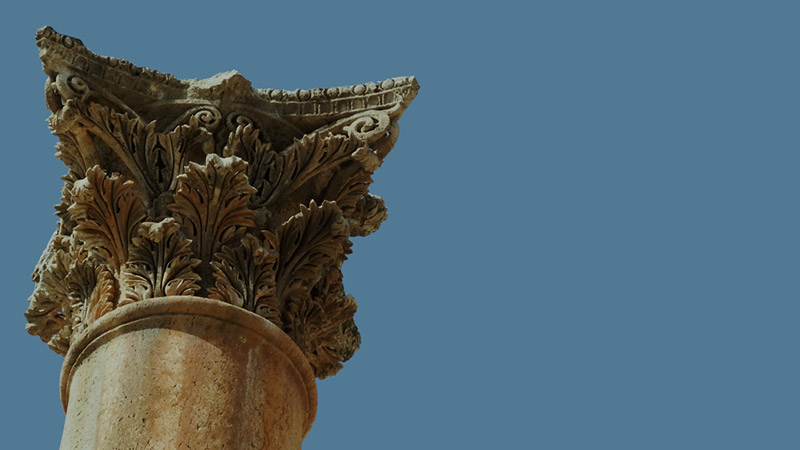More Results
Showing 12 of 48
Encyclopedia

A Galilean Kitchen
This kitchen is near the door of the house. A domed oven has been reconstructed; it was probably used for heating and cooking when the weather was cold. There would be similar ovens outside for use at other times.The outer part of the oven gathere...
MORE
Azekah
Tel Azekah is a five-acre site overlooking the Valley of Elah. The Judea Mountains stand to the east. The Mediterranean Sea, located about twelve miles to the west, can be seen from the tel.Archaeologists have identified at least four levels of ci...
MORE
Basalt Crusher
This crusher is found at Capernaum, Jesus' home-base (Matthew 4:13), near the synagogue. The local basalt "a hard, volcanic black rock" made excellent crushers and other types of grinders.Jesus frequently saw crushers and millstones like...
MORE
City Life
Most cities from the biblical period were fairly small, and people lived in closely knit, well-defined communities. Jerusalem of David's time covered 9-10 acres with a population of 1,500-2,000 persons. Jerusalem during Jesus' time occupied about ...
MORE
Feeding the Flock
Both the settled shepherds living along the fringes of the wilderness and the nomadic wilderness shepherds pastured their sheep on barren hillsides unsuitable for farming.Visitors to the Near East wonder how sheep found food on these hillsides. Ye...
MORE
Gethsemane
This olive press is in the Capernaum, Jesus' home-base (Matt. 4:13), near the synagogue. The crushed olive pulp was placed in baskets (about four inches thick and two feet in diameter), which were then stacked several high. These baskets are barel...
MORE
Gethsemane and the Olive Press
The word gethsemane is derived from two Hebrew words: gat, which means "a place for pressing oil (or wine)" and shemanim, which means "oils."During Jesus' time, heavy stone slabs were lowered onto olives that had already been c...
MORE
Gethsemane in Capernaum
This press was located in a building, not a cave. The pulp from the crusher was put in baskets and placed on the stone base under the large limestone pillar. Note the groove around the outside, which channeled the oil into the pit just to the left...
MORE
Herod the Builder
The Works of a Master BuilderHerod the Great's visionary building programs, ingenious development of trade with other countries, and advancement of his nation's interests were remarkable. He used his magnificent building projects to strengthen his...
MOREGlossary

Gan Definition
Garden; or terraced hillside, sometimes containing a number of different fruit trees like olive, fig, and grape.
MORE
Gethsemane Definition
The word gethsemane is derived from two Hebrew words: gat, which means "a place for pressing oil (or wine)", and shemanim, which means "oils." During Jesus' time, heavy stone slabs were lowered onto olives that had already been...
MORE


















